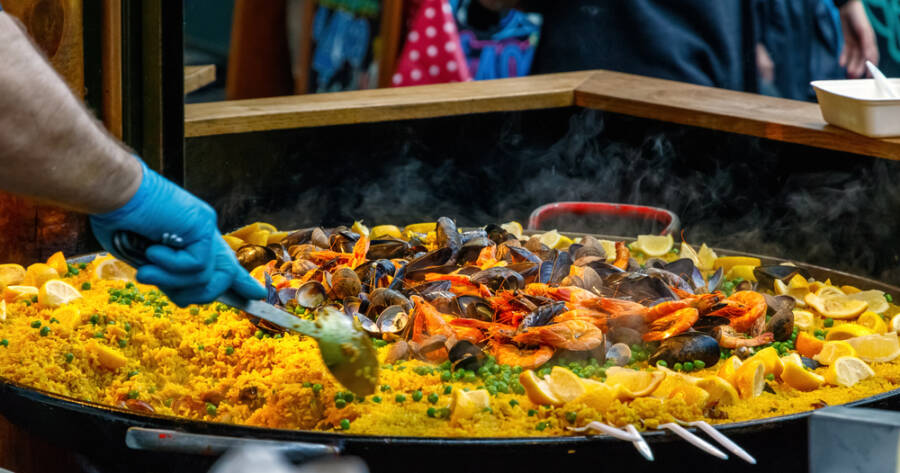Culinary exploration offers a fascinating lens into diverse cultures and traditions. From the aromatic spices of India to the delicate pastries of France, each region presents a unique palate and story. Diving into a world of flavors might help one appreciate the intricacies of different cuisines, fostering a deeper understanding of global cultures. This gastronomic journey could entice every taste bud and inspire a love for the world’s culinary arts.
Exploring Asian Delicacies
Asia’s culinary scene is as varied as its landscapes. Each country showcases ingredients and cooking techniques that have been honed over centuries. In Japan, sushi and sashimi might provide a glimpse into the art of balance and simplicity. These dishes emphasize fresh ingredients and precise techniques, potentially offering a delightful experience for those exploring minimalist cuisines.
In Thailand, street food like Pad Thai or green curry could tantalize the senses with their bold flavors and textures. The harmonious blend of sweet, salty, and spicy elements typifies Thai cooking. It’s believed that understanding this balance may help in appreciating the skill involved in creating Thai dishes.
China’s extensive range of regional cuisines, such as Sichuan with its spicy and numbing flavors, might offer a taste of this country’s culinary diversity. Exploring these dishes may reveal an influence of geography and tradition on China’s rich culinary tapestry.
The Richness of European Cuisine
Europe serves as a culinary epicenter, offering a medley of flavors and traditions. In Italy, the celebration of fresh and local ingredients is evident in its wide array of pasta dishes. Italian cooking might appear deceptively simple, yet it remains a comforting and satisfying exploration of hearty flavors.
France, often the cradle of fine dining, is renowned for its pastries, wines, and cheeses. French cuisine might emphasize technique and presentation, potentially enticing those interested in the aesthetics of dining. Dishes like Coq au Vin or Ratatouille could introduce food lovers to the country’s rich gastronomic history.
Spain offers tapas, small plates designed for sharing, which might reflect the social aspect of dining. Exploring Spanish cuisine could offer insights into how their lifestyle and climate influence their culinary preferences.
The Bold Flavors of Africa
African cuisine is vast and diverse, with each region offering distinctive flavors. North African dishes like Moroccan tagines might present a mixture of sweet and savory, often incorporating dried fruits and spices. The slow cooking process typical of tagines may help develop deep, complex flavors.
West African cuisine, known for its robust and spicy dishes, might be highlighted by Jollof Rice, a beloved staple across many nations. This dish could open a window into the communal aspect of African dining and celebration.
In East Africa, the influence of Indian and Arab spices may be evident in dishes such as Kenyan Pilau. Exploring these meals might reveal the historical trade routes that have left an indelible mark on the region’s culinary landscape.
Discovering the Americas
North, Central, and South America all boast vibrant culinary traditions. Mexican cuisine, known for its bold and layered flavors, could be exemplified by dishes like Mole or Tacos al Pastor. These meals might offer a peek into Mexico’s rich and varied history.
In the United States, the melting pot of cultures is reflected in diverse regional specialties. The Southern cuisine, with dishes like Gumbo or Barbecue, might provide a glimpse into the heart of American comfort food. Such dishes may illustrate how immigration and regional resources shape local fare.
Central and South America offer a variety of tastes, from the Argentine Asado, showcasing the art of grilling, to the Peruvian Ceviche, which highlights fresh seafood often marinated in citrus. Exploring these might reveal an appreciation for the robust flavors and techniques that define these vibrant cultures.
Learn More Today!
Embarking on a culinary adventure across the globe can be a rewarding experience, providing insights into diverse cultures and traditions. Each dish tells a story, often deeply rooted in the history and lifestyle of its region.
By exploring global cuisines, one might develop a nuanced appreciation for the art and complexity of cooking. While actual health benefits, cultural understanding, and palate expansion are possibilities, the journey itself is enriching in myriad ways, offering a delicious intersection of culture and cuisine.

